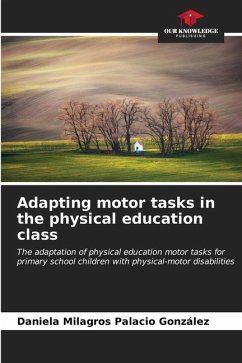
Diagram of physical development and its relationship to laterality of children
THE DEVELOPMENT OF BODY SCHEMA AND ITS RELATIONSHIP TO THE LATERALITY OF CHILDREN.
Versandkostenfrei!
Versandfertig in 1-2 Wochen
25,99 €
inkl. MwSt.

PAYBACK Punkte
13 °P sammeln!
The following topic is developed in the interest of knowing about what is the laterality preference that most people show on one side of their own body as opposed to the other side. Normally, the predominance of one side over the other is reflected in hand, foot, eye and ear. Those of us who are oriented make it possible for this function of the body in space and time and therefore allow us written codes. The senses and children with a lateralization handle have a good psychomotor organization well defined some tasks of better that allows them to perform learning, such as coordinating the move...
The following topic is developed in the interest of knowing about what is the laterality preference that most people show on one side of their own body as opposed to the other side. Normally, the predominance of one side over the other is reflected in hand, foot, eye and ear. Those of us who are oriented make it possible for this function of the body in space and time and therefore allow us written codes. The senses and children with a lateralization handle have a good psychomotor organization well defined some tasks of better that allows them to perform learning, such as coordinating the movement of the hand with the look to write, among others. It is also conceived Spatial understanding is simple. Therefore, it is important for a good development lateralization child learning. When our laterality has completed its development, our body and then a reference point our brain referee from which to place the left and right, up and down. That's why children up to 4 or 5 years old have a hard time differentiating between them or knowing what to put on each shoe, etc.












